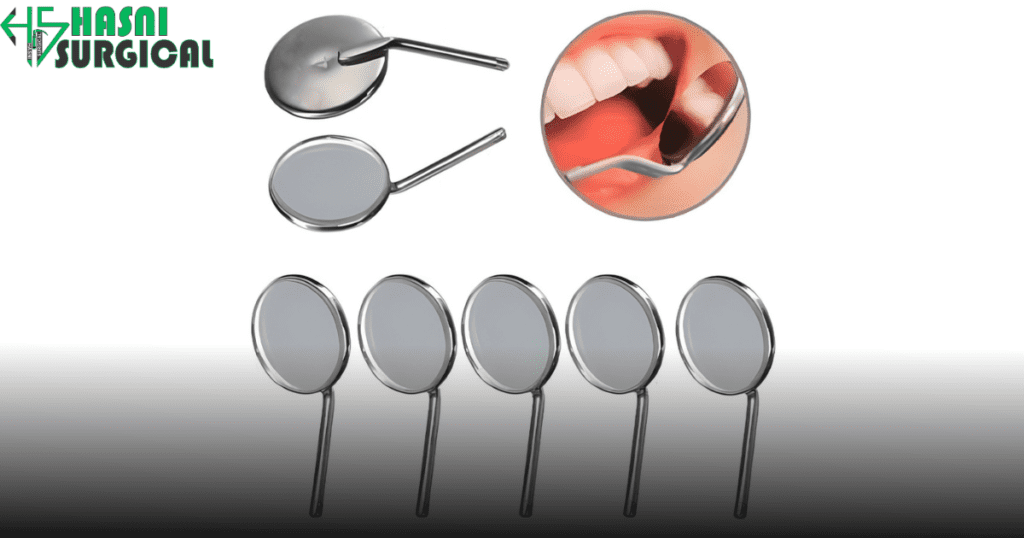Dental Instruments: Key to Success and Patient Satisfaction
August 29, 2024 2024-11-21 6:21Dental Instruments: Key to Success and Patient Satisfaction
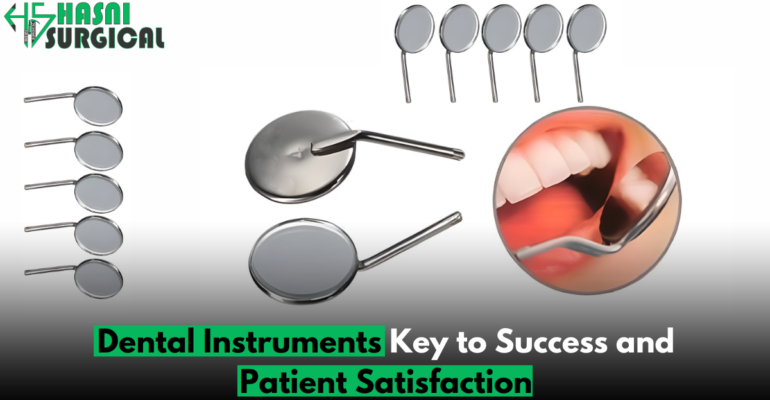
Dental Instruments: Key to Success and Patient Satisfaction
Introduction
Success and Patient Satisfaction
Imagine walking into a dental clinic. As you settle into the chair, you notice the assortment of instruments laid out meticulously on a tray. From sleek handpieces to sophisticated imaging systems, these tools represent the intersection of science, technology, and meticulous craftsmanship. dental tools instruments may seem simple, but they’re essential to modern dentistry. Their evolution over the years has transformed how dentists diagnose, treat, and manage oral health issues.
The significance of dental tools extends beyond their technical capabilities. They are the linchpin to achieving accurate diagnoses, efficient treatments, and optimal patient care. In today‘s age of advanced dental instruments, the impact of these instruments is multifaceted. They improve precision in dental tool procedures, leading to better outcomes and a better patient experience. Quality instruments ensure successful treatments, reduce patient anxiety and discomfort, and build trust in dental tools care providers.
In this blog, we’ll explore how Dental Instruments impact treatment and patient satisfaction from diagnosis to final care. We’ll explore how technological advancements enhance outcomes and patient experiences, showing the key role of dental tools and instruments in quality care.
Precision and accuracy in diagnosis
The cornerstone of effective dental treatment is an accurate diagnosis. Without precise identification of dental issues, even the most skilled practitioners can find it challenging to provide effective treatments. Modern Dental Instruments have significantly improved the diagnostic process, enabling dentists to pinpoint problems with greater accuracy than ever before. Let’s delve deeper into how these Dental Instruments enhance precision and accuracy in dental diagnostics.
Intraoral Cameras
Intraoral cameras are small, pen-sized devices that allow dentists to take high-resolution images of the inside of a patient’s mouth. These images can be shown on a monitor, offering a clear view of the teeth and gums.
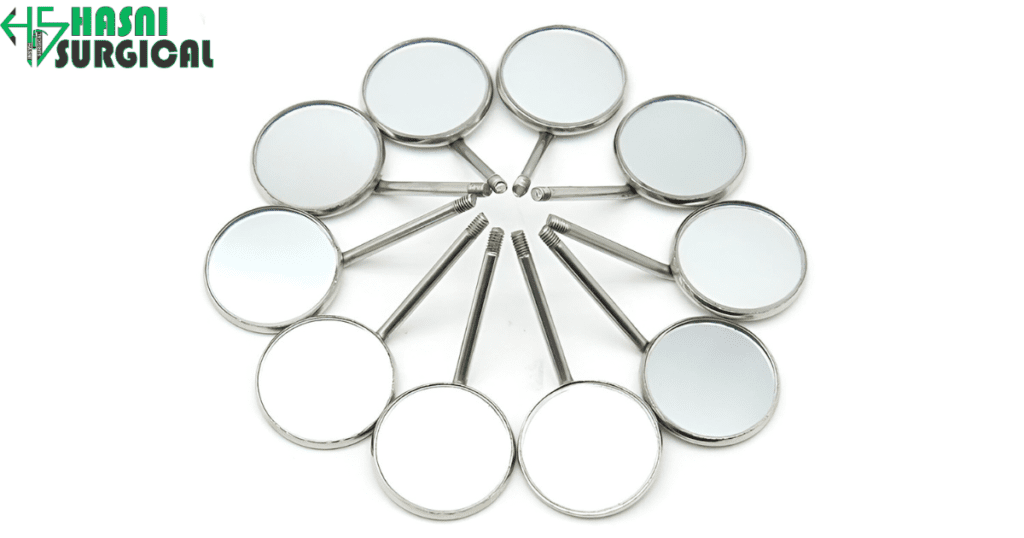
Impact on Outcomes: Intraoral cameras detect small cracks, cavities, and gum disease not visible to the naked eye. Early identification allows dentists to recommend treatments before issues worsen, improving oral health and preserving natural teeth.
Impact on Patient Satisfaction: Patients often find it easier to understand their dental issues when they can see them clearly. This visual aid boosts communication, builds trust, and engages patients in their care decisions.
Digital X-rays
Digital X-rays have largely replaced traditional film-based X-rays in modern dental practices with dental tools. They provide high-definition images with significantly less radiation exposure.
Impact on Outcomes: Digital X-rays provide clearer images for a more detailed examination of teeth, roots, and surrounding bone structure. This accuracy is crucial for diagnosing issues like impacted teeth, bone loss, abscesses, and tumors. Additionally, digital X-rays can be enhanced and enlarged, providing a clearer picture that aids in precise diagnosis and treatment planning.
Impact on Patient Satisfaction: The reduced radiation exposure is a significant advantage for health-conscious patients. Digital X-rays produce images quickly, reducing patient wait times and improving their experience at the dental office.
Cone Beam Computed Tomography (CBCT)
CBCT is a 3D X-ray imaging technique for dental tools and craniofacial structures. It is particularly useful for complex cases requiring detailed anatomical information.
Impact on Outcomes: CBCT’s 3D images provide a complete view of the patient’s dental tools and facial structures. This is invaluable in planning treatments such as implant placement, orthodontics, and reconstructive surgery. The detailed view aids in spotting complications and enables precise planning, enhancing the success of complex procedures.
Impact on Patient Satisfaction: Patients feel more confident in their diagnosis knowing their dentist uses advanced imaging technology. This confidence can alleviate anxiety, particularly in cases involving significant dental tool work.
Laser Cavity Detection
Laser cavity detection devices, such as DIAGNOdent, use laser technology to detect early signs of tooth decay. These devices measure fluorescence within the tooth structure to identify decay that might not yet be visible on the surface.
Impact on Outcomes: Early detection allows for conservative treatments like small fillings instead of crowns or root canals. This not only preserves more of the natural tooth but also reduces the likelihood of future complications.
Impact on Patient Satisfaction: Patients appreciate less invasive treatment options that come with early detection. Advanced technology helps catch problems early, reassuring patients they’re getting excellent care for their oral health.
Enhanced Diagnostic Software
Advanced diagnostic software integrates data from various diagnostic tools, providing a comprehensive overview of the patient’s oral health. This software can analyze digital X-rays, CBCT scans, and intraoral images to identify patterns and potential issues.
Impact on Outcomes: Integrating data from multiple sources ensures accurate diagnoses by covering all details. This holistic approach allows for the creation of a detailed and effective treatment plan tailored to the patient’s specific needs.
Impact on Patient Satisfaction: Patients benefit from a more accurate diagnosis and personalized treatment plan. The use of cutting-edge technology to provide thorough care enhances the patient’s trust and satisfaction in the dental practice with dental tools.
Conclusion
The precision and accuracy provided by modern Dental Instruments are indispensable in contemporary dental practice with dental tools. By enabling early detection and accurate diagnosis, these tools significantly improve treatment outcomes and patient satisfaction. Advanced diagnostics ensure accurate dental tool issue detection and effective treatment for better oral health.
Enhancing treatment efficacy
In dental care, the effectiveness of treatments depends on the quality of Dental Instruments. Modern advancements have introduced tools that enhance efficiency and improve care quality. Here, we delve deeper into how these advanced dental instruments enhance treatment efficacy, leading to better patient outcomes.
Precision Instruments for Restorative Procedures
Restorative Dental Instruments aims to repair and restore damaged teeth to their natural function and appearance. The precision of the instruments used in these procedures is crucial. High-speed dental tool drills remove decayed material precisely while preserving healthy tooth structure.
Impact on Outcomes: High-speed handpieces ensure precise cuts, reducing tissue damage and patient discomfort.
Impact on Patient Satisfaction: Patients benefit from shorter treatment times and less discomfort, leading to a more positive experience. Precise, aesthetically pleasing restorations boost patient confidence and satisfaction with their dental care with the dental tools.
Advanced Endodontic Tools
Endodontics, particularly root canal therapy, has seen significant advancements with the introduction of rotary endodontic instruments and electronic apex locators. Rotary endodontic systems use flexible nickel-titanium files and electric motors to clean and shape root canals more efficiently.
Impact on Outcomes: These tools ensure effective removal of infected tissue and bacteria for successful root canals. The increased efficiency and precision reduce the risk of procedural errors and improve the overall success rate of endodontic treatments.
Impact on Patient Satisfaction: Faster, more reliable root canal procedures translate to fewer appointments and less discomfort for patients. Successful root canal treatments relieve pain and restore function, greatly enhancing patient satisfaction.
Minimally Invasive Techniques with Lasers
Laser dentistry represents a significant leap forward in minimally invasive dental care with Dental Instruments. Dental lasers can be used for cavity detection and removal, gum reshaping, and treating periodontal disease. Lasers offer pinpoint accuracy, targeting only the affected areas without harming surrounding tissues.
Impact on Outcomes: Lasers minimize trauma to nearby tissues, resulting in less bleeding, swelling, and postoperative discomfort. This minimally invasive approach promotes faster healing and reduces the risk of infection and other complications.
Impact on Patient Satisfaction: The reduced need for anesthesia, minimal postoperative discomfort, and quicker recovery are key benefits for patients. The efficiency and effectiveness of laser treatments enhance the overall patient experience and satisfaction.
Ultrasonic Scaling for Periodontal Care
Periodontal care involves the treatment of gum disease, which is critical for maintaining overall oral health. Ultrasonic scalers have become a staple in periodontal therapy due to their ability to effectively remove plaque and calculus from tooth surfaces and below the gum line.
Impact on Outcomes: Ultrasonic scalers use high-frequency vibrations to break down plaque and tartar, which is more effective and less damaging than manual scaling. This thorough cleaning is essential for managing gum disease and preventing its progression.
Impact on Patient Satisfaction: The comfort and efficiency of ultrasonic scaling are appreciated by patients, especially those with sensitive gums. The reduction in treatment time and improved outcomes lead to higher levels of satisfaction.
Computer-Aided Design and Manufacturing (CAD/CAM)
CAD/CAM technology has revolutionized the fabrication of Dental Instruments restorations such as crowns, bridges, and veneers. This technology allows for the design and production of highly accurate and customized dental prosthetics within a single visit.
Impact on Outcomes: The precision of CAD/CAM technology ensures that restorations fit perfectly, reducing the likelihood of complications such as misalignment or an improper bite. The use of high-quality materials also enhances the durability and aesthetic appeal of the restorations.
Impact on Patient Satisfaction: Same-day restorations are a significant advantage, eliminating the need for multiple visits and temporary crowns. The high precision and aesthetic quality of CAD/CAM restorations greatly enhance patient satisfaction.
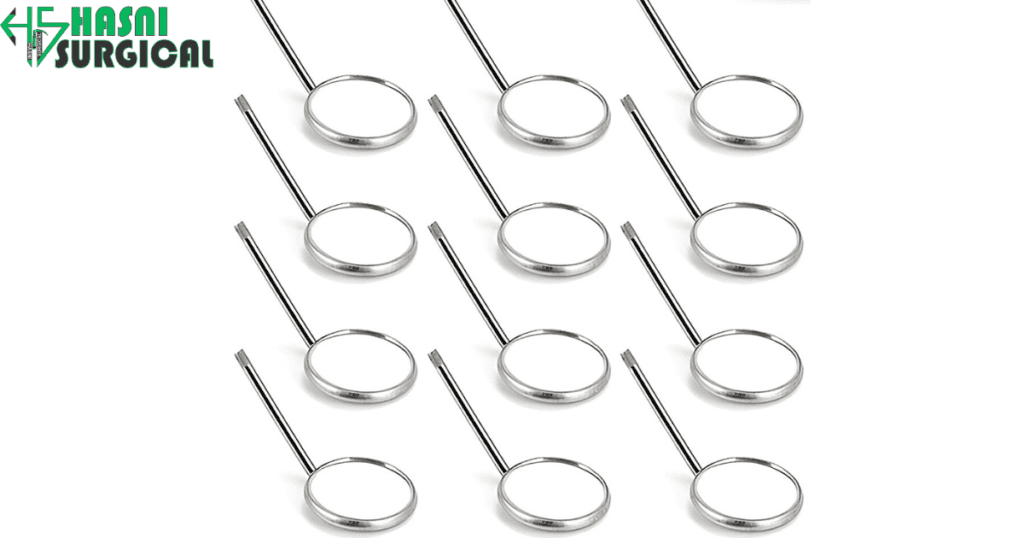
Conclusion
The integration of advanced Dental Instruments into treatment protocols has markedly improved the efficacy of dental procedures. From high-speed handpieces and rotary endodontic systems to laser dentistry and CAD/CAM technology, these Dental Instruments enable more precise, efficient, and patient-friendly treatments. By reducing treatment times, enhancing procedural accuracy, and improving overall patient comfort, modern dental instruments play a crucial role in achieving better clinical outcomes and higher patient satisfaction. As Dental Instruments continues to evolve, patients can look forward to even more innovative solutions that will further enhance the quality and experience of dental care.
Comfort and anxiety reduction
Dental Instruments Anxiety is a widespread issue that can significantly impact a patient’s willingness to seek and undergo dental tool care. Studies have shown that a substantial portion of the population experiences some level of anxiety when visiting the dentist, often stemming from past negative experiences, fear of pain, or a general fear of the unknown. To address this, the dental industry has made great strides in developing Dental Instruments and techniques that enhance patient comfort and reduce anxiety.
Advanced Anesthetic Techniques
One of the primary sources of Dental Instruments anxiety is the fear of pain during procedures. Modern anesthetic techniques and instruments have been designed to minimize discomfort. Tools such as computer-controlled local anesthetic delivery systems (like the Wand) provide a more comfortable and controlled administration of anesthesia. These systems reduce the pain associated with injections by delivering the anesthetic slowly and steadily, preventing the sudden sting often associated with traditional injections.
Impact on Outcomes: Effective anesthesia ensures that patients are pain-free during procedures, allowing dentists to work more efficiently and effectively without the need to manage patient discomfort.
Impact on Patient Satisfaction: Reducing the pain associated with dental procedures significantly enhances patient satisfaction. When patients have a pain-free experience, they are more likely to return for regular check-ups and follow-up treatments.
Sedation Dentistry
For patients with severe anxiety, sedation Dental Instruments offers a viable solution. Sedation can range from mild sedation, such as nitrous oxide (laughing gas), to moderate sedation with oral sedatives, and even deep sedation or general anesthesia for complex procedures. Sedation helps patients relax and reduces their awareness of the procedure, making it an excellent option for those with an intense dental tool phobia.
Impact on Outcomes: Sedation allows dentists to perform procedures more effectively, especially for patients who might otherwise be too anxious to tolerate extensive dental tool work. This can lead to better clinical results and fewer interruptions during the procedure.
Impact on Patient Satisfaction: Patients who undergo sedation often report a more positive dental tool experience, remembering little to nothing of the procedure. This helps alleviate their fear of future visits and promotes regular dental care.
Noise Reduction and Distraction Techniques
The sounds associated with dental procedures, such as the high-pitched whir of a dental tool drill, can be anxiety-inducing for many patients. To combat this, many dental practices now use noise-canceling headphones and offer entertainment options like music, movies, or virtual reality experiences during treatments. These distractions can significantly reduce patient anxiety and make the dental visit more pleasant.
Impact on Outcomes: By reducing anxiety, patients are more likely to stay calm and cooperative during procedures, allowing the dentist to perform more precise and effective work.
Impact on Patient Satisfaction: Providing distractions and reducing noise helps create a more relaxing environment. Patients appreciate the effort to make their visit as comfortable as possible, which enhances their overall satisfaction and willingness to return.
Ergonomically designed dental chairs
Modern dental tool chairs are designed with patient comfort in mind. These chairs often come with memory foam cushions, adjustable headrests, and lumbar support to ensure that patients can relax comfortably during their treatment. Some chairs also offer massage features or heating elements to further enhance comfort.

Impact on Outcomes: Comfortable patients are more likely to remain still and relaxed during procedures, which helps dentists perform their work with greater precision and less stress.
Impact on Patient Satisfaction: A comfortable dental tools chair can make a significant difference in a patient’s experience. When patients are physically comfortable, their anxiety levels decrease, contributing to a more positive overall impression of their visit.
Friendly and reassuring communication
Beyond physical comfort, the manner in which Dental Instruments professionals communicate with patients plays a critical role in reducing anxiety. Dentists and hygienists who take the time to explain procedures, answer questions, and offer reassurance can significantly ease a patient’s fears. Techniques such as showing patients the instruments and explaining their functions before use or employing a “tell-show-do” approach can demystify the process and build trust.
Impact on Outcomes: Clear and compassionate communication can lead to better patient cooperation and adherence to treatment plans, which in turn leads to better health outcomes.
Impact on Patient Satisfaction: When patients feel heard and understood, their overall experience improves. A caring and communicative dental tools team can turn a potentially stressful visit into a positive one, encouraging patients to maintain regular dental appointments.
Conclusion
The Dental Instruments industry’s focus on comfort and anxiety reduction through advanced anesthetic techniques, sedation dentistry, noise reduction strategies, ergonomically designed dental chairs, and effective communication has transformed the patient experience. These innovations not only improve the clinical efficiency and success of treatments but also play a crucial role in enhancing patient satisfaction. By prioritizing patient comfort and addressing anxiety, dental practices can foster a more welcoming and positive environment, encouraging better oral health practices and long-term patient loyalty.
Sterilization and Hygiene: Ensuring Safe Dental Practices
In any healthcare setting, sterilization and hygiene are paramount to preventing infections and ensuring patient safety. In dentistry, where Dental Instruments come into direct contact with blood and saliva, maintaining rigorous sterilization standards is crucial. This section delves into the importance of sterilization and hygiene in dental practices with dental tools, the instruments and methods used, and their impact on treatment outcomes and patient satisfaction.
The Importance of Sterilization in Dentistry
Sterilization is the process of eliminating all forms of microbial life, including bacteria, viruses, fungi, and spores, from dental tools and instruments. Proper sterilization prevents the transmission of infections between patients and from the dental environment to patients. It is a fundamental aspect of dental care that protects both patients and dental staff from potential infections, such as hepatitis B and C, HIV, and other transmissible diseases.
Impact on Outcomes: The use of sterilized instruments ensures that dental procedures are performed in a clean and safe environment, significantly reducing the risk of post-operative infections and complications. This leads to better healing outcomes and lowers the incidence of treatment failures caused by infections.
Impact on Patient Satisfaction: Patients are increasingly informed and concerned about hygiene practices in medical settings. Visible adherence to high sterilization standards builds trust and confidence in the dental practice with dental tools, leading to greater patient satisfaction and loyalty.
Instruments and Methods Used for Sterilization
To achieve effective sterilization, dental practices employ a variety of advanced instruments and methods. Each tool and technique is designed to ensure that all microbial life is eradicated from dental instruments, providing a safe environment for patient care.
Autoclaves: Autoclaves are the most commonly used sterilization devices in dental practices with dental tools. They use pressurized steam at high temperatures to kill microorganisms. The typical cycle involves heating instruments to temperatures between 121°C and 134°C for a specified period. Autoclaves are highly effective and reliable, making them a cornerstone of dental sterilization protocols.
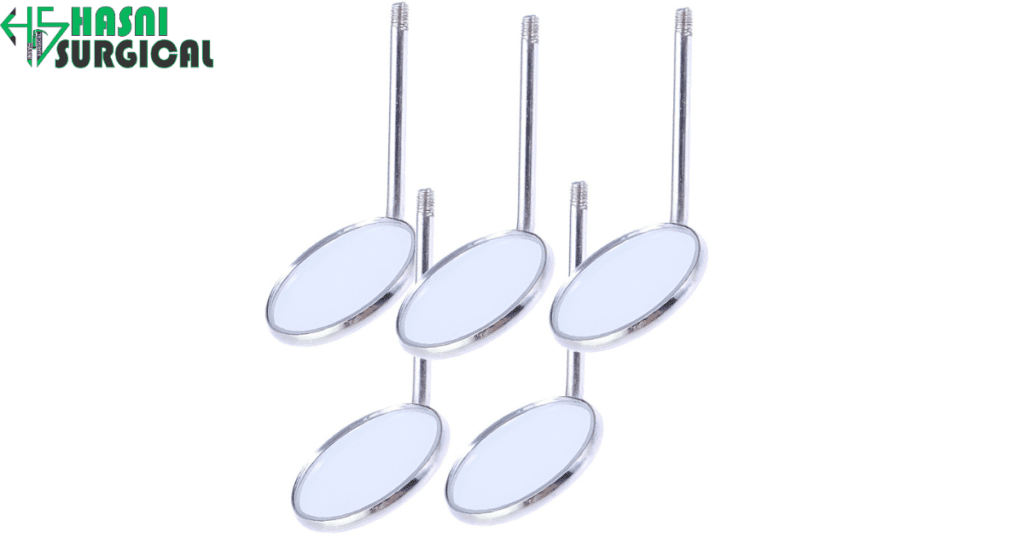
Chemical vapor sterilizers: These devices use a combination of chemicals, heat, and pressure to sterilize dental tools and instruments. Chemical vapor sterilizers, also known as chemiclaves, are particularly useful for sterilizing instruments that may be damaged by the moisture in steam autoclaves. The process involves a chemical solution that releases vapor, effectively sterilizing the instruments.
Ultrasonic Cleaners: Before instruments are sterilized in an autoclave or chemiclave, they are often cleaned with ultrasonic cleaners. These devices use high-frequency sound waves to create microscopic bubbles in a cleaning solution, which collapse and remove debris and contaminants from the instruments. Ultrasonic cleaning ensures that instruments are free from visible debris before the sterilization process, enhancing their effectiveness.
Cold sterilization: For instruments that cannot withstand high temperatures, cold sterilization is used. This method involves soaking instruments in a chemical sterilizant for a specified period. While not as quick as other methods, cold sterilization is essential for certain materials and instruments.
Protocols and best practices
To maintain high standards of sterilization and hygiene, dental practices and dental tools follow stringent protocols and best practices. These protocols are designed to ensure that every instrument and surface that comes into contact with patients is properly sterilized and safe.
Instrument Handling: After use, dental instruments are immediately placed in a designated area for cleaning and sterilization. They are carefully handled to avoid contamination and damage.
Pre-cleaning: Instruments are first cleaned to remove any organic and inorganic debris. This step is crucial, as residual debris can interfere with the sterilization process.
Packaging: Cleaned instruments are then packaged in sterilization pouches or wraps. These packages are designed to maintain sterility after the sterilization process and during storage.
Sterilization Cycle: Packaged instruments are placed in an autoclave or other sterilization devices. The sterilization cycle is closely monitored using indicators that change color when the correct conditions are met.
Storage: After sterilization, instruments are stored in a clean, dry environment. Packages are sealed until they are needed, ensuring they remain sterile.
Impact on Treatment Outcomes and Patient Satisfaction
Maintaining rigorous sterilization and hygiene standards has a profound impact on both treatment outcomes and patient satisfaction.
Impact on Outcomes: Effective sterilization prevents infections that can complicate dental treatments and delay healing. By ensuring a sterile environment, dentists can perform procedures with greater confidence in their success, leading to more predictable and positive outcomes.
Impact on Patient Satisfaction: Patients who observe and experience high standards of cleanliness and sterilization are more likely to feel safe and cared for. This assurance translates into trust and satisfaction with the dental practice with dental tools. Additionally, practices that prioritize sterilization are more likely to receive positive reviews and referrals, contributing to their reputation and patient base.

Conclusion
Sterilization and hygiene are non-negotiable aspects of dental tool care that directly impact treatment success and patient experience. Advanced sterilization instruments and strict protocols ensure that dental practices and dental tools provide safe and effective care. For patients, the assurance of a sterile environment translates into trust and peace of mind, enhancing their overall satisfaction and willingness to return for future dental needs. As technology and methods continue to evolve, maintaining and improving sterilization standards will remain a cornerstone of high-quality dental care.
Conclusion
The evolution of dental instruments has significantly transformed dental care, enhancing the precision, efficacy, and comfort of treatments. These advancements not only improve clinical outcomes but also play a critical role in patient satisfaction. As technology continues to advance, the dental industry can look forward to even more innovative instruments that will further refine treatment processes and enhance the patient experience.
Impact on the Dental Profession: For dental professionals, staying abreast of the latest technological advancements in dental instruments is essential. Continuous education and training on new tools and techniques not only improve their skill set but also enable them to offer the best possible care to their patients. Moreover, investing in cutting-edge instruments can set a dental practice apart from its competitors, attract more patients, and build a reputation for high-quality care.
Patient trust and confidence: The use of advanced dental instruments builds trust and confidence among patients. When patients see that their dentist employs state-of-the-art technology, they feel assured that they are receiving top-notch care. This trust is crucial, especially for individuals who may have had negative experiences with dental care in the past. Trust fosters long-term relationships between patients and dental professionals, encouraging regular visits and a proactive approach to oral health.
Minimizing Dental Anxiety: Many patients experience anxiety or fear when visiting the dentist. The use of modern, less-invasive instruments can help alleviate these fears. For example, laser dentistry, which reduces the need for drills, can significantly decrease patient discomfort and anxiety. This reduction in fear can lead to more consistent dental visits, better oral hygiene practices, and overall improved health outcomes.
Future Prospects: Looking ahead, the dental industry is poised for even more advancements. Innovations such as artificial intelligence in diagnostics, 3D printing for prosthetics, and teledentistry for remote consultations are just beginning to make their mark. These technologies promise to further enhance the precision, accessibility, and affordability of dental care. For instance, AI can assist in more accurate diagnoses and treatment planning, while 3D printing can produce custom dental implants and crowns with unmatched accuracy and speed.
Holistic Patient Care: Modern dental instruments also facilitate a more holistic approach to patient care. With comprehensive diagnostic tools, dentists can better understand a patient’s overall health and how it intersects with their oral health. For example, certain dental issues can be early indicators of systemic health problems like diabetes or heart disease. Advanced diagnostic instruments enable dentists to identify these connections and collaborate with other healthcare providers to ensure comprehensive patient care.
Environmental Impact: The shift towards advanced dental instruments also includes considerations for sustainability and environmental impact. For instance, digital imaging reduces the need for chemical-based film processing, which is better for the environment. Additionally, more efficient sterilization methods and disposable instruments made from eco-friendly materials help reduce the ecological footprint of dental practices.
In conclusion, the impact of dental instruments on treatment outcomes and patient satisfaction is profound and multifaceted. From enhancing diagnostic precision and treatment efficacy to improving patient comfort and reducing anxiety, the benefits are clear. As dental technology continues to advance, both patients and practitioners stand to gain from a future where dental care is more effective, efficient, and patient-friendly than ever before. For patients, knowing that their dentist has access to the latest and most effective tools provides peace of mind and a more positive outlook on maintaining their oral health. For dental professionals, these advancements represent an exciting opportunity to elevate the standard of care and improve the overall patient experience.
